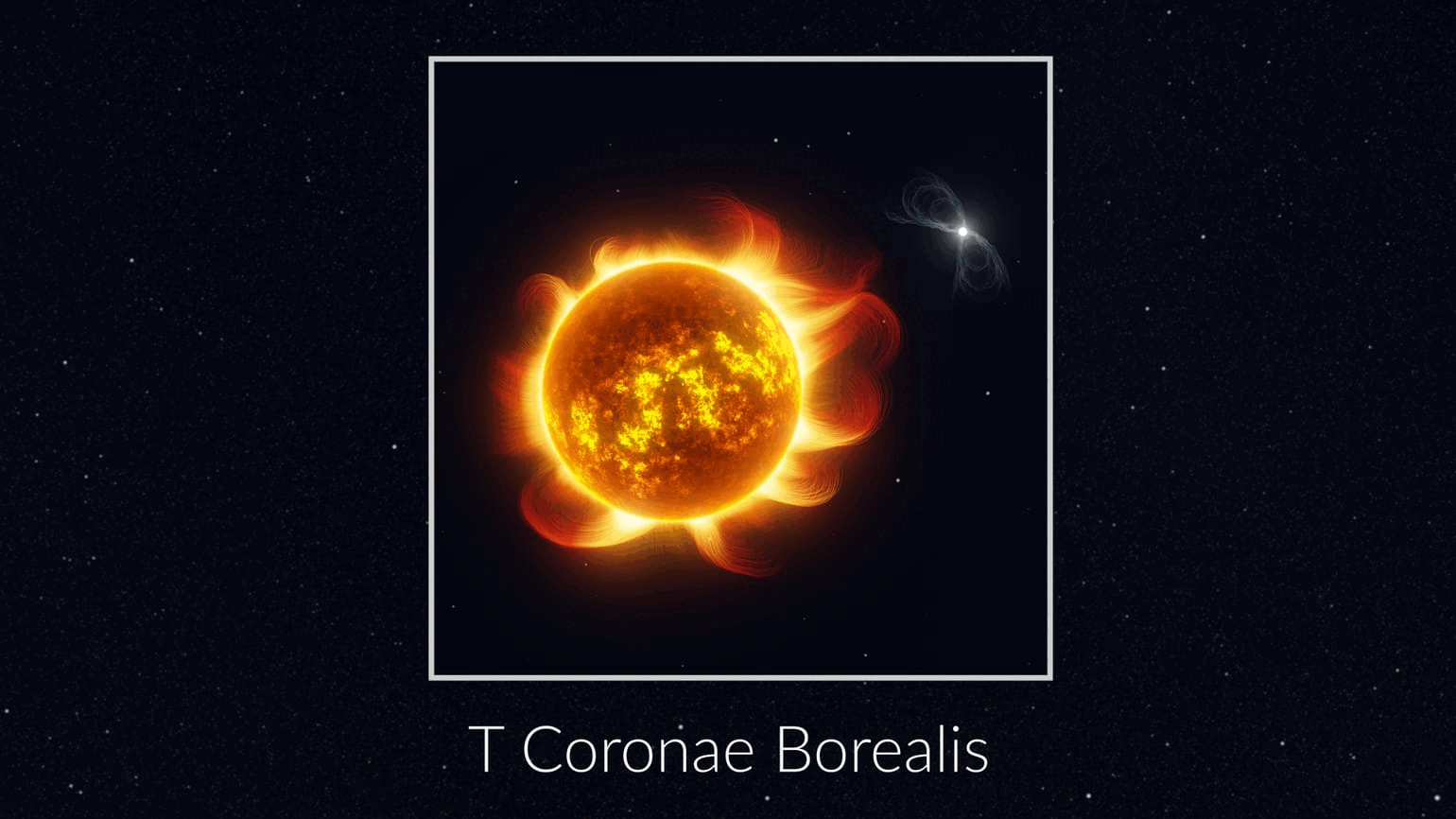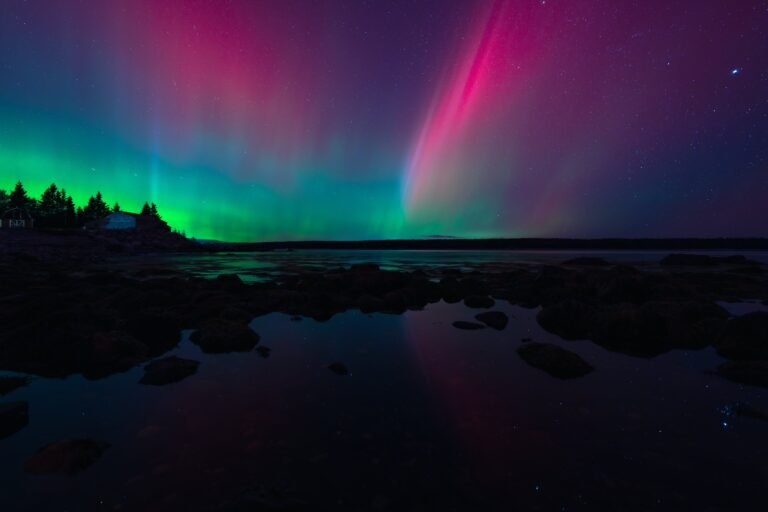For almost two years now, a binary system by the name T Coronae Borealis, located 3000 light years away from Earth, has started reducing its brightness. This dimming process started back in 2023 and is a sign that T CrB (short for Corona Borealis) is nearing the phase where it increases in brightness and is visible to the naked eye. That sudden increase is referred to as a “Nova Explosion”. But why does this happen and what is so spectacular about this phenomenon?
To begin with, we must familiarize ourselves with recurrent novae. A nova is a transient astronomical event that causes the sudden appearance of a bright, apparently “new” star, that slowly fades over weeks or even months. All observed novae happen withing a binary system, including two stars, usually dwarf stars similar in size. There are three sub-classes of novae: classical novae, recurrent novae (T CrB), and dwarf novae. Classical novae and recurrent novae are pretty similar to each other, with the main difference being that a recurrent novae happens again and again, over a fixed period of time.
universemagazine.com
A recurrent nova is created in a close binary system consisting of a white dwarf and a main sequence. In T CrB the two stars involved are a hot white dwarf, and a cool red giant. The white dwarf is surrounded by an accretion disc (most commonly found in black holes), which is a structure formed by diffuse material in orbit around the star. When the system is in a quiescent state, the red giant dominates the visible light output, and the system appears as a type M3 giant.
en.wikipedia.org
The two stars orbit around the center of mass of the system every 228 days. The orbit is almost circular and is inclined at an angle of 67°. The distance between them is 0.54AU (=Astronomical Units, 1AU = distance between Earth and the Sun).
How does a nova happen? The cool red giant is slowly being stripped of hydrogen by the hot white dwarf’s strong gravitational force. The hydrogen from the red giant accretes on the surface of the white dwarf, reaching high speeds and increasing its temperature. This sudden buildup of pressure and heat triggers a thermonuclear explosion big enough to blast away that accreted material into interstellar space, creating the envelope seen as visible light during the nova event. For T CrB, that event appears to reoccur every 80 years on average.
chara.gsu.edu
Finding T Coronae Borealis
Back in autumn 1217, a man by the name of Burchard, abbot of Ursberg, who lived in Germany, spotted “a faint star that for a time shone with great light”. That star happened to be T CrB and that was its first ever sighting. The T CrB nova was last seen from Earth in 1946, a year after WWII ended. If the pattern continues like this, we might me able to see a new star in our night sky this year.
Back in autumn 1217, a man by the name of Burchard, abbot of Ursberg, who lived in Germany, spotted “a faint star that for a time shone with great light”. That star happened to be T CrB and that was its first ever sighting. The T CrB nova was last seen from Earth in 1946, a year after WWII ended. If the pattern continues like this, we might me able to see a new star in our night sky this year.
civilsdaily.com
What should stargazers look for? The Northern Crown is a horseshoe – shaped curve of stars west of the Hercules constellation. It can be identified by locating Arcturus and Vega. Vega is visible throughout the year, whereas Arcturus cannot be seen during the winter months. Corona Borealis is located at the center of these two stars.
The outburst is said to be brief and will only be visible to the naked eye for a little less than a week. This timetable can be increased using strong telescopes in dark, clear skies.
Closing, T CrB exemplifies the intricate dynamics of binary star systems, with its periodic nova outbursts providing critical insights into accretion processes and stellar evolution. Continued observations of this recurrent nova will further refine our understanding of these energetic phenomena and their role in shaping the cosmos.








